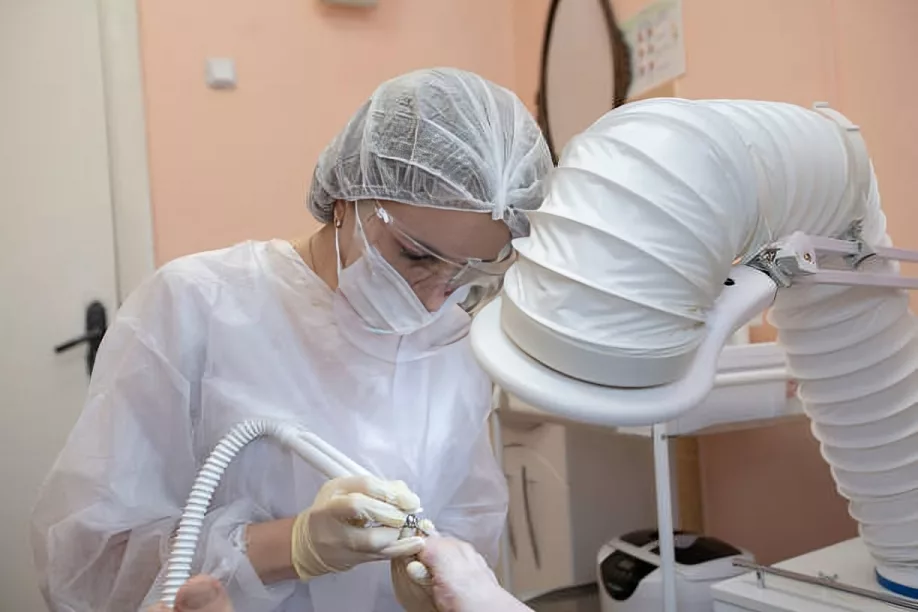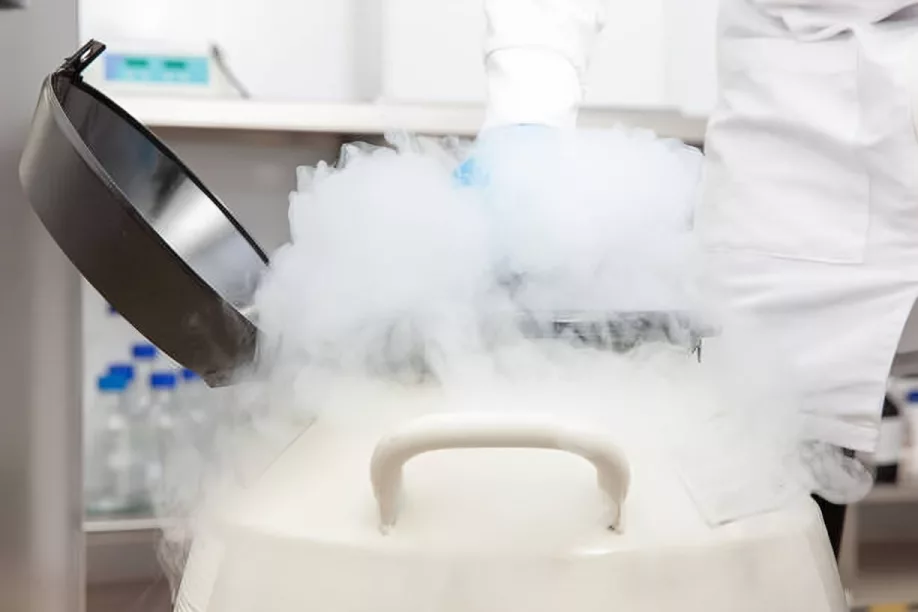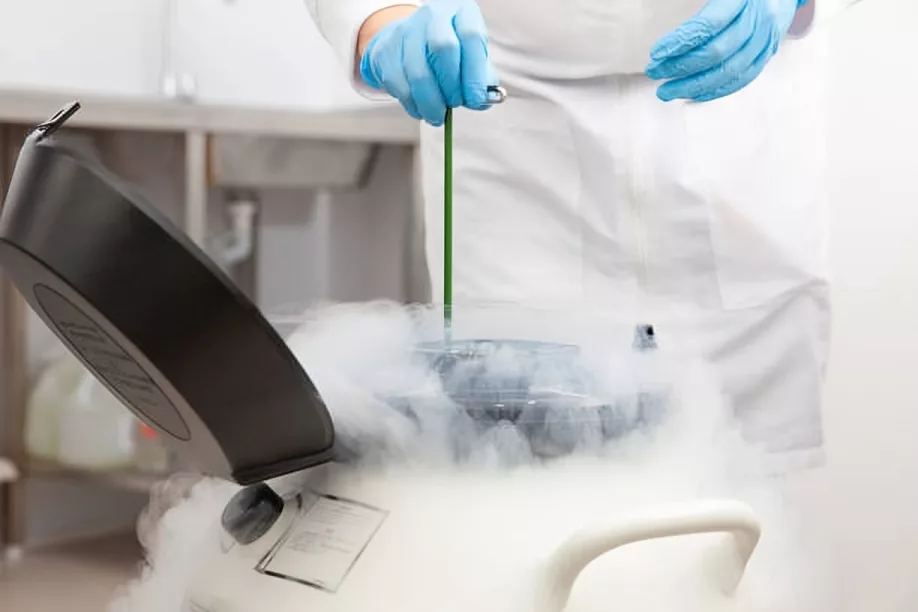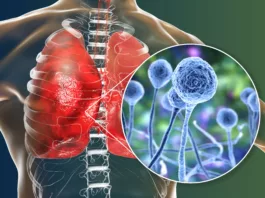Cryoablation is a therapeutic medical procedure that utilizes gases with extremely low temperatures to freeze and destroy abnormal living tissue. It is an important treatment for numerous cancers and skin disorders.
What is Cryoablation Therapy?
Cryoablation is a type of treatment that destroys your body’s cells at extremely low temperatures. This therapy is done using thin needles called cryoprobes, which administer liquid nitrogen or argon with temperatures as low as -80°C to -40°C. These needles penetrate tissues and inject freezing chemicals into them to destroy or shrink them.
Principle of Cryoablation
The term ablation refers to the destruction or removal of body tissues, whereas “cryo” refers to anything that involves freezing temperatures. Therefore, cryoablation literally means freezing tissues to death.
Cryoablation lowers the temperature of target tissues to lower than -40°C. At this extreme cold, your cells can simply not survive or repair themselves. This way, abnormal cells suffer irreversible cell damage and get completely destroyed. This happens through a variety of mechanisms, such as:
Formation of Ice Crystals:
When tissues are frozen, ice crystals form inside and outside their constituent cells. Inside, these crystals damage important cell parts, like their membranes and inner structures, which cause them to die. Outside, the ice breaks down the surrounding extracellular matrix, which is the biological glue that holds cells together in a tissue. As a result, tissues get damaged inside out.
Osmotic Imbalance:
Freezing pulls water out of your cells, thereby drying them out. However, when the tissue is thawed, water floods back in, resulting in cell swelling and bursting. This back-to-back freezing and thawing results in cell death.
Damage to Blood Vessels:
Cryoablation also targets the blood vessels that feed your tissues. Abnormal cells are usually heavily vascularized and have a vast blood supply. These vessels are very sensitive to freezing. If destroys their endothelium and damages them. As a result, the blood supply to the area gets cut off. Since tissues cannot survive without the oxygen and nutrients that are brought to them via blood, they die.
Inflammatory Effects:
Your body’s immune system kicks in as tissues get destroyed through cryoablation. It sends special cells to your immune cells area to clean up the dead tissue. This response helps attack any leftover abnormal cells and provides extra extra protection.1Erinjeri, J. P., & Clark, T. W. I. (2010). Cryoablation: Mechanism of Action and Devices. Journal of Vascular and Interventional Radiology, 21(8), S187–S191. https://doi.org/10.1016/j.jvir.2009.12.403
Benefits of Cryoablation Therapy
This therapy has several benefits which give it an edge over treatment modalities, such as:
- Cryoablation therapy is minimally invasive. It does not require deep cuts, so it does not cause extensive scarring or the formation of any granulation tissues.
- In addition to safety, cryoablation therapy is associated with faster recovery time than traditional surgery. You can often go home the same day as you had your cryoablation therapy appointment.
- When performed correctly, cryoablation therapy only targets abnormal tissues. It spares normal tissue from any damage.
Indications of Cryoablation Therapy
This therapy can be used to destroy all kinds of living tissue and has a number of indications. These conditions include:
Tumors:
Cryoablation is an important treatment for benign and malignant tumors or cancers because it targets dangerous tissues without hurting nonmalignant cells. It is used to treat cancers like:
- Breast cancer
- Liver cancer
- Renal cancer
- Prostate cancer
- Lung cancer
- Skin cancer
As a part of palliative care, it is used to treat cancers that cannot be cured by chemotherapy, radiation, or surgery. It shrinks tumors to small sizes, which reduces generalized symptoms of tissue compression, such as:
- Pain from pressure on nerves or organs
- Trouble breathing from blocked airways
- Swelling from poor blood or fluid flow
- Digestive problems from pressure on the stomach or intestines2Chen, Z., Meng, L., Zhang, J., & Zhang, X. (2023). Progress in the cryoablation and cryoimmunotherapy for tumors. Frontiers in Immunology, 14. https://doi.org/10.3389/fimmu.2023.1094009
Skin Conditions:
Cryoablation can eliminate benign, precancerous, and cancerous skin lesions with great accuracy. Its targeted action is life-changing for patients as it does not cause any cosmetic damage to normal, healthy skin. Some of the skin conditions cryoablation treats are:

- Benign skin conditions
o Seborrheic keratosis
o Skin tags
o Skin warts
o Moles - Precancerous skin conditions
o Actinic keratosis
o Dysplastic moles
o Bowen’s disease - Skin cancer
o Melanoma
o Basal cell carcinoma
o Squamous cell carcinoma3Prohaska, J., & Jan, A. H. (2023, September 15). Cryotherapy in Dermatology. Nih.gov; StatPearls Publishing. https://www.ncbi.nlm.nih.gov/books/NBK482319/
Gynecological Conditions:
A number of gynecological conditions can be treated through cryoablation, such as:
- Problems with the endometrial lining of the uterus can cause abnormal bleeding, endometrial hyperplasia, and severe discomfort. Cryoablation can specifically target cells of the endometrium to relieve these symptoms.
- Uterine fibroids are masses of tissue within the uterus that cause pelvic pain, heavy bleeding, and, occasionally, fertility issues. Cryoablation can freeze and shrink their size without any invasive procedures involved.
- Endometriosis is a condition where cells present in the endometrium grow elsewhere in your body. It causes intense pain as well as infertility. Cryoablation can specifically target these cells to reduce the severity of this lifelong disorder.
- Precancerous lesions of the cervical and early-stage cervical cancer can also be treated through cryoablation. It has a short recovery time and preserves fertility, all while cutting short the progression of cancerous changes in your reproductive tract.4Clinic, C. (2016, November 16). Cervical cryosurgery is a procedure that freezes and destroys irregular tissue on your cervix. Cleveland Clinic. https://my.clevelandclinic.org/health/treatments/9120-cryosurgery-of-the-cervix
Arrhythmias:
Arrhythmias are cardiac conditions where your heart develops an abnormal rhythm instead of its regular one. If left untreated, arrhythmias can result in cardiac arrest and death. Arrhythmias are a result of abnormal electric impulses in the cells of your heart, and cryoablation is a relatively safe method of reversing this imbalance. After being inserted into your cardiovascular system through an intravenous balloon catheter, it destroys the cells that produce these abnormal rhythms without damaging normal cells. As a result, the normal function of your heart is restored.5Stanford Health Care. (2019, December). Stanfordhealthcare.org. https://stanfordhealthcare.org/medical-treatments/c/cryoablation.html
Contraindications of Cryoablation Therapy
Even though cryoablation therapy is considered a safe procedure for most people, there are a few contraindications of this treatment:
- Known hypersensitivity to cold can lead to exaggerated reactions like frostbite or damage to tissues, which are not the targets of ablation through cryotherapy.
- Conditions with circulatory compromise— such as shock— limit blood flow during cryoablation therapy. They increase the risk of hypoxia and generalized tissue damage.
- A history of frostbite raises the risk of re-injury due to recurrent exposure to freezing temperatures.
- Leukemia weakens the immune system and increases the risk of complications such as sepsis.
- Autoimmune disorders like lupus can cause an unpredictable immune response to extremely cold temperatures.

Risks associated with Cryoablation Therapy
Cryoablation is generally considered safe, but it may have a few risks associated with it:
- Minor bleeding can occur at the site where cryoprobes are administered.
- Injection sites can get infected if they have not been cleaned properly.
- If the target area is close to the skin, there’s a small chance of a skin reaction.
- Tumors near sensitive areas, like major nerves or blood vessels, might not be treated completely.6Clinic, C. (2017, April 6). Cryoablation uses extremely cold gas to freeze and destroy abnormal cells or diseased tissue. It’s often used to treat cancer and skin disorders. Cleveland Clinic. https://my.clevelandclinic.org/health/treatments/16903-cryoablation
How can I prepare for Cryoablation?
Cryoablation is usually an outpatient procedure, so you probably won’t need to prepare for an extended hospital stay. However, you can take a few steps to prepare for cryoablation therapy to make the experience smoother for yourself:
- Let doctors know of the medications and supplements you are taking, as some drugs, e.g., blood thinners, are required to be stopped prior to the procedure.
- If you are going through a procedure that involves sedation or anesthesia, avoid eating and drinking twelve hours before your scheduled procedure.
- On the day of your appointment, you are advised to wear loose-fitting clothing. Avoid wearing accessories and skin lotion.
- Ask your doctor about any pre-procedure instructions they have regarding your management, and make sure you comply with them.
What happens on the day of Cryoablation?
After arriving at the hospital, you will be admitted to a ward and asked to change into a hospital gown. You may also be required to wash yourself with an antibacterial soap to prevent infections. Depending on the type of procedure, nurses will insert an intravenous cannula into your arm to administer the necessary drugs and fluids. When it is time for the procedure, you will be taken to a designated area and shifted to a table.
Steps of Cryoablation Procedure
Once the patient has been prepared, the procedure of carrying out cryoablation therapy is relatively simple:
- Your doctor will make a small incision to access the target site. Then, they will insert the cryophobe into your skin and guide it to the abnormal tissue present in your body. This is usually guided by an imaging modality like X-ray, CT/ MRI scan, or ultrasound.
- Liquid nitrogen or argon will be circulated through the cryoprobe to generate extreme cold. This will cause ice formation at the tip of the cryoprobe and destroy the tissues it is in contact with.
- Your doctor will run a natural or induced thawing process and then freeze your tissues again. This freeze-thaw cycle ensures maximum destruction of abnormal tissue.
- Once the procedure is complete, the doctor will carefully remove the cryoprobe. A surgical assistant will clean the incision site and apply dressing over it.
What happens after a Cryoablation Procedure?
After the procedure is over, you are shifted to a recovery room. Here, your vitals are monitored. If you were given anesthesia, your medical team waits for its effects to wear off. They also give you antibiotics and painkillers and observe for any post-procedure complications.
What do you need to know about Cryoablation Recovery Time?
Recovery time after cryoablation depends on the type of procedure that has been performed. After topical cryotherapy, you can immediately resume normal activities. On the other hand, recovery from percutaneous cryoablation can take 1-3 days. In the case of surgical cryoablation, recovery takes at least 7-10 days — despite that, you should avoid lifting anything for at least three days.
What is the Average Cryoablation success rate?
Cryoablation procedures have success rates as high as 70-80%. However, these rates are different for the different types of procedures being performed. For instance, two rounds of cryoablation therapy can abolish atrial fibrillation, a life-threatening arrhythmia, in over 82% of the cases.7Penela, D., & Riccardo Cappato. (2021). How effective is cryoablation in the treatment of atrial fibrillation? European Heart Journal Supplements, 23(Supplement_E), E51–E54. https://doi.org/10.1093/eurheartj/suab089

Complications of Cryoablation Therapy
Complications of cryoablation therapy may result from improper technique or underlying health conditions. These include:
- Damage to nerves and blood vessels
- Hemorrhage
- Infection
- Frostbite
- Cryoshock
- Pneumothorax
- Soft tissue injury
Is Cryoablation Therapy Safe for Kidneys?
Cryoablation therapy is safe for kidneys. It is a less invasive procedure in comparison with total kidney removal when it comes to treating kidney disorders such as renal cancer. In addition, it does not significantly affect kidneys when administered to other structures.
Cryoneurolysis vs Cryoablation
Cryoneurolysis is a specific type of cryotherapy that targets neuronal tissue. On the other hand, cryoablation is a type of cryotherapy that destroys all sorts of abnormal tissue growth.
| Cryoneurolysis | Cryoablation |
| Used to disable neurons and diminish nerve function | Destroys all kinds of diseased tissue |
| Targets peripheral nerves | Targets cancerous, precancerous, and other abnormal growths |
| Often used for pain management | Often used to treat cancer |
| Tissue destruction is temporary | Tissue destruction is permanent |
Conclusion
Cryoablation is an effective treatment for conditions like cancer, skin issues, and gynecological disorders. It is important for both palliative and curative medicine. It targets abnormal tissues with minimal invasiveness, all while preserving healthy tissue. Moreover, cryoablation uses extremely cold liquid nitrogen, or argon, to destroy targeted areas. In comparison with surgery, recovery time is much faster. With proper technique, it has next to no side effects beyond mild discomfort. Patients usually get discharged the same day and can go home to resume their daily activities after a few days of rest.
Refrences
- 1Erinjeri, J. P., & Clark, T. W. I. (2010). Cryoablation: Mechanism of Action and Devices. Journal of Vascular and Interventional Radiology, 21(8), S187–S191. https://doi.org/10.1016/j.jvir.2009.12.403
- 2Chen, Z., Meng, L., Zhang, J., & Zhang, X. (2023). Progress in the cryoablation and cryoimmunotherapy for tumors. Frontiers in Immunology, 14. https://doi.org/10.3389/fimmu.2023.1094009
- 3Prohaska, J., & Jan, A. H. (2023, September 15). Cryotherapy in Dermatology. Nih.gov; StatPearls Publishing. https://www.ncbi.nlm.nih.gov/books/NBK482319/
- 4Clinic, C. (2016, November 16). Cervical cryosurgery is a procedure that freezes and destroys irregular tissue on your cervix. Cleveland Clinic. https://my.clevelandclinic.org/health/treatments/9120-cryosurgery-of-the-cervix
- 5Stanford Health Care. (2019, December). Stanfordhealthcare.org. https://stanfordhealthcare.org/medical-treatments/c/cryoablation.html
- 6Clinic, C. (2017, April 6). Cryoablation uses extremely cold gas to freeze and destroy abnormal cells or diseased tissue. It’s often used to treat cancer and skin disorders. Cleveland Clinic. https://my.clevelandclinic.org/health/treatments/16903-cryoablation
- 7Penela, D., & Riccardo Cappato. (2021). How effective is cryoablation in the treatment of atrial fibrillation? European Heart Journal Supplements, 23(Supplement_E), E51–E54. https://doi.org/10.1093/eurheartj/suab089





